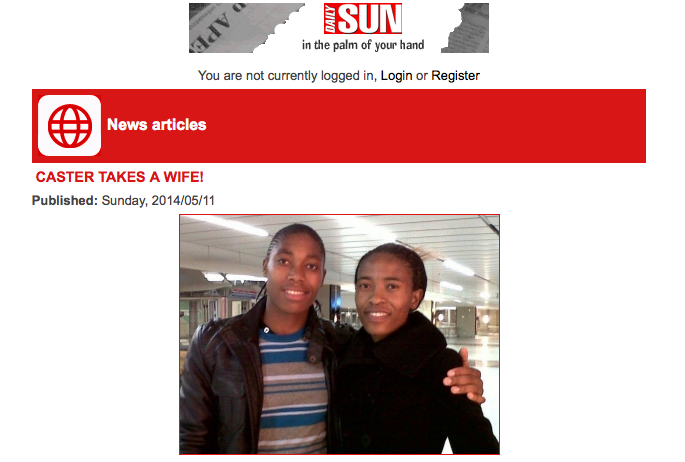FOR IMMEDIATE RELEASE
May 7, 2014
CONTACT
Don Romesburg
New GLBT History Museum Exhibit Commemorates the 30th Anniversary of the First Bisexual Political Rally with
Four Decades of “BiCONIC” Bay Area Bisexual Activism
xxx
San Francisco – A new multimedia exhibit opening May 29 at the GLBT History Museum tells the story of San Francisco Bay Area’s bisexual activism that since the 1970s has been grounded in the politics of visibility, accountability, and vitality. A playful spirit has mixed with a seriousness of purpose at key moments across four decades, fueling today’s dynamic global bisexual movement.
Titled “BiCONIC FLASHPOINTS: 4 Decades of Bay Area Bisexual Politics,” the exhibit features never-before-displayed video, artifacts and photographs from the GLBT Historical Society’s archival bisexual collections as well as the personal holdings of bisexual leaders. The show’s Community Curators include Lani Ka’ahumanu, Emily Drennen, Martin Rawlings-Fein, and Lindasusan Ulrich.
“Bisexual politics are as simple and complex as love itself,” said Community Curator Lani Ka’ahumanu. “Bisexual history grounds and inspires us toward a more welcoming, inclusive, and engaged future. This exhibit challenges historic and ongoing erasure and compels everyone to reconsider the B in LGBT.”
The show tells this story in four flashpoints: Founded in 1976, the Bisexual Center in San Francisco was a beacon of visibility and support. In 1984, the recently formed BiPOL registered and ran a Vice Presidential candidate at the Democratic National Convention, resulting in the first-ever public Bisexual Rights Rally. In 1990, BiPOL convened the first National Bisexual Conference to organize BiNET USA as well as producing groups for Jewish bisexuals and bisexuals of color. In 2008, bisexuals facing erasure in the “gay marriage” debate engaged in “unVEILing injustice,” which moved LGBT organizational and media language toward greater inclusivity and accuracy.
The show is part of an ongoing series in the GLBT History Museum’s Community Gallery that partner community curators with exhibitions professionals to create new perspectives on Bay Area queer history. Sonoma State University Women’s and Gender Studies Professor Don Romesburg directs the Community Gallery.
“BiCONIC FLASHPOINTS: 4 Decades of Bay Area Bisexual Politics” runs May 29, 2014-August 15, 2014. An opening reception is set for Thursday, May 29, 7:00 – 9:00 p.m. Additionally, the GLBT History Museum on Thursday, July 17, from 7:00-9:00 p.m. will host a special program celebrating the groundbreaking anthology Bi Any Other Name: Bisexual People Speak Out (1991). Contributors to the anthology will do readings of their works, including Kuwaza Imara, Carol Queen and Naomi Tucker. This will be a benefit for the GLBT History Museum and the Bay Area Bisexual Network.
Admission to the museum is $5.00 (general); $3.00 (California students); free for members of the GLBT Historical Society. For more information, visit www.glbthistorymuseum.org.
— 30 —
EDITOR’S NOTE
See the end of this section for photographs offered for reproduction in conjunction with coverage of the exhibit.
ABOUT THE COMMUNITY CURATORS
Lani Ka’ahumanu is a BiPOL founding organizer, author, activist, poet, educator, performer and visionary grandmother.
Emily Drennen is an outspoken bisexual and sustainable transportation advocate who loves spending time with her wife, Lindasusan and their foster-adopt son.
Martin Rawlings-Fein is a published author, a bisexual and trans* activist, a filmmaker, and a Jewish educator studying to become a rabbi.
Lindasusan Ulrich is a writer, musician, activist, and future Unitarian Universalist minister dedicated to a vision of radical welcome.
ABOUT THE GLBT HISTORY MUSEUM
The GLBT History Museum is located at 4127 18th St. in San Francisco’s Castro District. Open since January 2011, it is the first full-scale, stand-alone museum of its kind in the United States. Starting May 15, the new Main Gallery long-term exhibition is “Queer Past Becomes Present.” The Front Gallery and Community Gallery spaces present changing exhibitions.
The museum is a project of the GLBT Historical Society, a research center and archives that collects, preserves and interprets the history of gay, lesbian, bisexual and transgender people and the communities that support them. Founded in 1985, the society maintains one of the world’s largest collections of GLBT historical materials. For more information, visit www.glbthistory.org.
PHOTOGRAPHS FOR REPRODUCTION
These images may be reproduced in conjunction with coverage of the “BiCONIC FLASHPOINTS” exhibit at The GLBT History Museum. The indicated photo credit must be included.
Exterior of the GLBT History Museum; photo credit Daniel Nicoletta:
BiPOL founding organizer Lani Ka’ahumanu wields her “Bi-Phobia Shield” as she marches with her contingent in the 1984 Lesbian and Gay Freedom Day Parade; photo credit Arlene Krantz:



 South African world champion athlete and Olympic silver medallist, Caster Semenya, is marrying her fellow athlete, Violet Raseboya.
South African world champion athlete and Olympic silver medallist, Caster Semenya, is marrying her fellow athlete, Violet Raseboya. n the seventh round of the NFL draft the St. Louis Rams have picked Michael Sam, making him the first openly gay player to be drafted by a pro football team.
n the seventh round of the NFL draft the St. Louis Rams have picked Michael Sam, making him the first openly gay player to be drafted by a pro football team. bill to end the government’s bulk collection of telephone records got a unanimous go-ahead on Thursday from a second congressional committee, advancing the first
bill to end the government’s bulk collection of telephone records got a unanimous go-ahead on Thursday from a second congressional committee, advancing the first  n Thursday 6 June 2013, our fifth day in Hong Kong, I went to
n Thursday 6 June 2013, our fifth day in Hong Kong, I went to  his winter was brutal.
his winter was brutal.